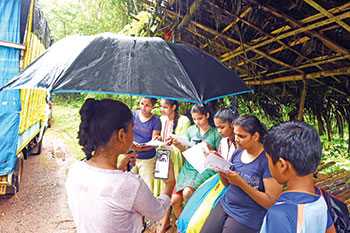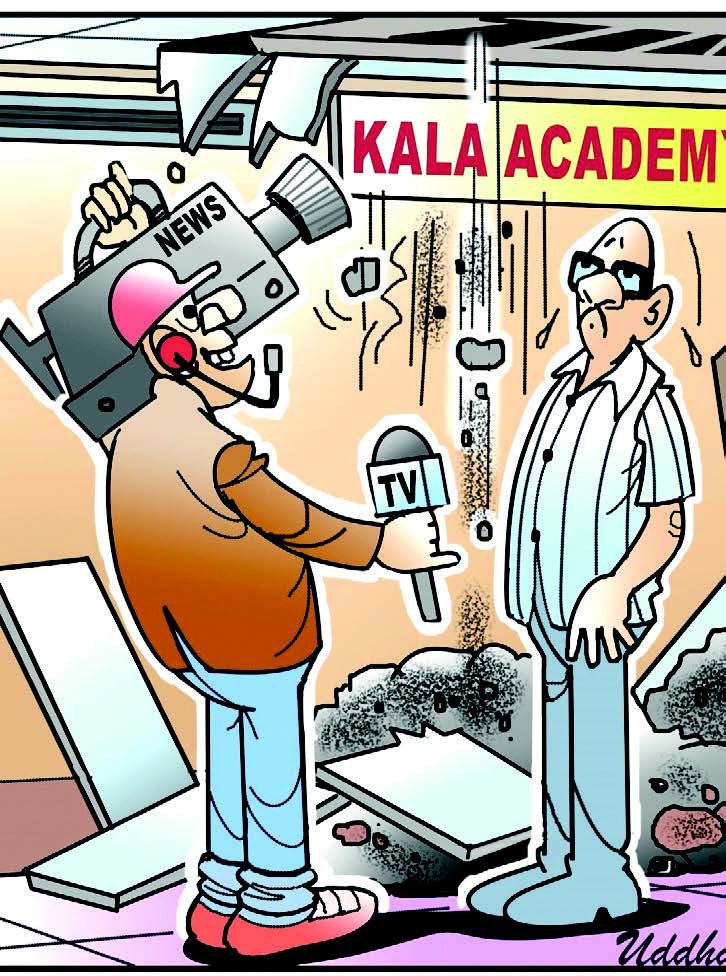
Amita Kanekar
India’s third National Education Policy (NEP) has been described as making ‘sweeping changes’ in the education system of the country, causing excitement, surprise and dismay in various quarters, and animated discussions in the media. But, announced at a time when schools and colleges across the country are closed, and education has gone online only to fail miserably for the majority of students, the first sense one gets is of a government bizarrely out of touch with reality. A closer look reveals that there is actually little that is new in this new NEP, and nothing at all that addresses the big problems of Indian education.
Of course, there is much mention of aiming for universal and high-quality education, but no concrete steps on how to do this. Instead, the specific changes proposed are reduced curricula and easier examinations, instruction in regional languages, a four-year undergraduate course, easy entry into and exit from degree courses, no more MPhil, multidisciplinary curricula everywhere, and entry of foreign universities, along with various changes in the governing of education.
Compare these ‘sweeping changes’, however, to the reality of education in India, and they turn into just tiny touch-up jobs on an essentially Brahmanical edifice. It is Brahmanism that has created this system of non-universal access to education, wide-ranging disparities in facilities and quality, and criminal neglect of mass primary education. This NEP continues this attitude, and, in fact, harps on the need to learn from ancient tradition.
Look at basic access. Like earlier NEPs, this NEP too pays only lip service to the idea of ‘Education for All’, merely saying that it must be achieved by 2040. In other words, a new and distant deadline. Who does this affect? Not the dominant castes or classes. Their children will continue to be guaranteed education right up to post-doctoral levels – with or without MPhil – while Bahujan children struggle to get even a scrap of primary education.
And what about quality? Any sincere education system would seek to give uniform – and quality – education to all, or at least to have minimal differences. In India, however, the quality of educational infrastructure is proudly stratified, and getting more so every day. Right from primary level, the variety of schools on offer include government-run village schools with the bare minimum infrastructure, slightly better municipal schools, posh government schools for central government employees, government-aided schools of widely varying facilities, and private schools which range from poor quality to seven-star facilities. One child may go to a school with leaking roofs but no water in the taps, while another, in the same city, goes to one which teaches horse-riding. Thanks to a hierarchy of school boards too, there is a hierarchy of curricula as well. And where a child fits into all these hierarchies depends upon their family background, which means that those from deprived backgrounds study in deprived schools. What can such a hierarchical system do except perpetuate existing inequalities and deprivation? But the NEP – which admits that 5 crore school students remain functionally illiterate, and urges public and private schools to ‘share resources if possible’ – does not touch the issue of hierarchy at all.
And what about students whose residence is not stable? If you are the child of a central government employee, your education is looked after even if your parent gets transferred every year. But if you are the child of migrant workers, there’s no system at all. The NEP says that this problem must be solved, but offers no solution.
Then there is the issue of education in the time of disasters, like this pandemic. Right now, Goan villages see children walking through jungles and up hills in the rain, to get the internet signals which connect them to education. It is the same scene, or worse, outside Goa. Shouldn’t the government be coming up with better options, at least now when it is clear that online classes only favour elite students? Especially since regular disasters are the norm in India, whether you call them natural or not. But NEP says nothing.
Finally, the old issue of medium of instruction, with the NEP declaring that instruction should be in regional languages, and Sanskrit a pan-Indian option.
And what the NEP does not say, and will never enforce, dominant regional languages as the medium of instruction in ALL schools, whether government or private. No, they are always compulsory only in the government schools where Bahujans perforce study. Elites are meanwhile free to attend English-medium private schools. A popular meme on social media these days shows how many Central ministers have children studying abroad (in English) – practically everyone!
The list of critical issues ignored by this NEP can continue, like how the system fails to address issues like caste discrimination, thus perpetuating traditional violence of all kinds. Meanwhile, commercialisation of education – which again benefits the elite – is set to increase with the NEP’s welcome to foreign universities.
The Brahmanical fundamentals of Indian education thus remain unchallenged. So, what was the new NEP for? Just lucrative deals with foreign universities? Also, perhaps, a good diversion from the government’s unending failures, from skyrocketing Covid-19 numbers, to the anniversary of the Kashmir clamp-down, not to mention China chomping away at the border? The biggest diversion was of course the Ayodhya ceremony, at least for BJP fans. For others, here, you can chew on a nice new NEP. Even if it’s actually the same old one.
(Amita Kanekar is an architectural historian and novelist.)
